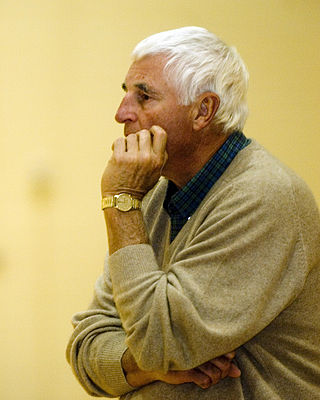
Robert Montgomery Knight was an American men's college basketball coach. Often referred to as Bobby Knight and nicknamed "the General", he won 902 NCAA Division I men's basketball games, a record at the time of his retirement and sixth all-time record at the time of his death.
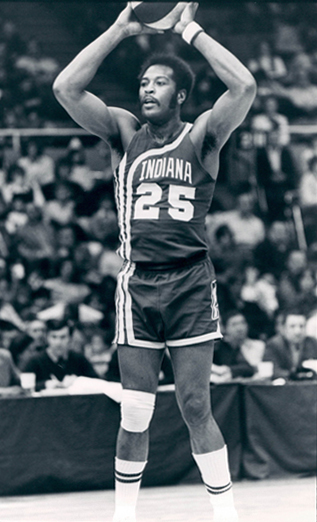
Gus (Honeycomb) Johnson Jr. was an American college and professional basketball player in the National Basketball Association (NBA) and American Basketball Association (NBA). A chiseled 6 ft 6 in (1.98 m), 235-pound (107 kg) forward who occasionally played center, Johnson spent nine seasons with the Baltimore Bullets before he split his final campaign between the Phoenix Suns and ABA champions Indiana Pacers. He was a five-time NBA All-Star before chronic knee issues and dubious off-court habits took their tolls late in his career.

Kermit Alan Washington is an American former professional basketball player. Washington is best remembered for punching opposing player Rudy Tomjanovich during an on-court fight in 1977. Washington was not a highly coveted player coming out of high school. He averaged four points per game during his senior season at Coolidge Senior High School. He improved rapidly once at American University, and became one of only seven players in NCAA history to average 20 points and 20 rebounds throughout the course of his career.
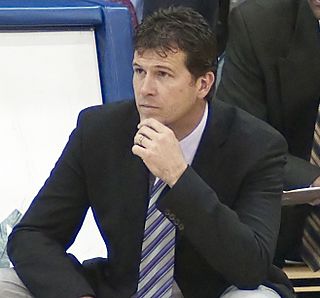
Stephen Todd Alford is an American men's college basketball coach and former professional player who is the head coach for the Nevada Wolf Pack of the Mountain West Conference (MWC). Born and raised in Indiana, he was a two-time consensus first-team All-American playing in college for the Indiana Hoosiers. He led them to a national championship in 1987. After playing professionally for four years in the National Basketball Association (NBA), he has been a college head coach for over 30 years.

Michael Dean Woodson is an American basketball coach and former professional player who is the head coach of the Indiana Hoosiers men's basketball team.

John Feinstein is an American sportswriter, author and sports commentator.
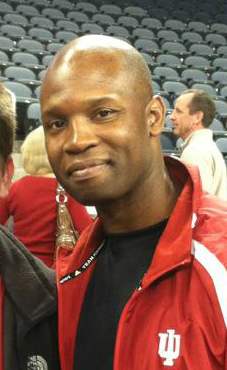
Calbert Nathaniel Cheaney is an American basketball coach and former player who serves as Director of player development for the Indiana Hoosiers men's basketball of the Big Ten. He starred as a player for the Indiana Hoosiers men's basketball from 1989 to 1993 under coach Bob Knight. Cheaney ended his career as a three-time All-American and remains the Big Ten's all-time leading scorer with 2,613 career points. He led Indiana to a 105–27 record and the NCAA Tournament all four years, including a Final Four appearance in 1992.
Clarence Eugene "Butch" Carter Jr. is an American former professional basketball player and coach. He played college basketball at Indiana University.

Knight School is a television documentary series produced by ESPN about a group of sixteen Texas Tech University students trying to make the Bob Knight coached Texas Tech Red Raiders basketball team as a non-scholarship (walk-on) player for the 2006–07 National Collegiate Athletic Association (NCAA) season. The documentary chronicles their progress and gives insight into Bob Knight and his coaching style. It premiered February 19, 2006 at 10:00 EST on ESPN, with new episodes airing each Sunday.

Michael Davis is an American basketball coach at the University of Memphis. Prior to that he was most recently the head men's basketball coach at the University of Detroit Mercy, a position he held from 2018 to 2024. Davis also served as the head men's basketball coach at Indiana University Bloomington from 2000 to 2006, the University of Alabama at Birmingham (UAB) from 2006 to 2012, and Texas Southern University from 2012 to 2018.

William Quinn Buckner is an American former professional basketball player and coach. He played collegiate basketball for the Indiana University Hoosiers, and won a national championship in 1976. He was a captain of both the last undefeated NCAA Division I basketball champion and the 1976 Olympics gold medal team. Buckner was selected by the Milwaukee Bucks with the 7th pick of the 1976 NBA draft. He had a ten-year NBA career for three teams. In 1984, he won an NBA title with the Celtics.
Damon Bailey is an American former professional basketball player. He rose to national prominence after being recruited by Indiana coach Bob Knight as an 8th grader, an unusual move at the time. Bailey went on to become Indiana's men's all-time high school leading scorer and would earn All-America honors playing for the Indiana Hoosiers. He became a cult figure during the late 1980s and early 1990s in Indiana. Bailey was an assistant coach of the Butler University's women's basketball team from 2014 to 2017.
Todd Michael Jadlow is an American former professional basketball player. He played the center and forward positions. 6'9" tall, he played collegiately for the Indiana University (Bloomington) Hoosiers from 1985 to 1989 and was a member of Coach Bob Knight's junior college recruits and one of Knight's all-time favorite players.

The Indiana Hoosiers men's basketball team represents Indiana University Bloomington in NCAA Division I college basketball and competes in the Big Ten Conference. The Hoosiers play at Simon Skjodt Assembly Hall on the Branch McCracken Court in Bloomington, Indiana on the Indiana University Bloomington campus. Indiana has won five National Championships in men's basketball – two coming under Branch McCracken and three under Bob Knight. For forty-seven years and counting, Indiana's 1976 squad remains the last undefeated NCAA men's basketball champion.
The 1974–75 Kentucky Wildcats men's basketball team represented the University of Kentucky and was the 1975 NCAA runner-up. The head coach was Joe B. Hall. The team was a member of the Southeast Conference and played their home games at Rupp Arena.
The 1974–75 Indiana Hoosiers men's basketball team represented Indiana University, led by fourth-year head coach Bobby Knight. The team played its home games on campus in Bloomington at Assembly Hall, and was a member of the Big Ten Conference.
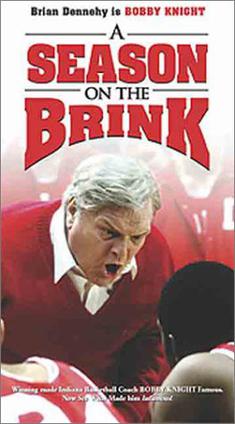
A Season on the Brink is a 2002 made-for-television sport drama film directed by Robert Mandel. Based on a book by John Feinstein entitled A Season on the Brink which detailed the turbulent 1985–86 season of Indiana University's men's basketball team, led by coach Bobby Knight, the film became the first ESPN television film, premiering on March 10, 2002.

The Indiana–Kentucky rivalry is a college sports rivalry between the Indiana University Hoosiers and the University of Kentucky Wildcats. The rivalry between these two schools, located about 180 miles (290 km) apart, dates to their first college football game in 1893, and has continued across all sports, with the men's basketball series gaining particular attention. The football game was previously played for a wooden Bourbon Barrel trophy, which was discontinued in 1999.
The 1985–86 Indiana Hoosiers men's basketball team represented Indiana University. Their head coach was Bobby Knight, who was in his 15th year. The team played its home games in Assembly Hall in Bloomington, Indiana, and was a member of the Big Ten Conference.

The Illinois–Indiana rivalry is a college sports rivalry between the University of Illinois Fighting Illini and the Indiana University Hoosiers. The rivalry between these bordering-state schools dates back to 1899 when the Indiana Hoosiers joined the Big Ten Conference of which Illinois is a founding member. The rivalry is most prominent in men's basketball, where both teams are perennial "Final Four contenders" and combined have won several conference championships. In football, the rivalry is less intense, but notable for the two school's geographic proximity, the history and longevity of the series with 73 total meetings dating back to 1899 and their status as a previously "protected rivalry" in the Big Ten.












